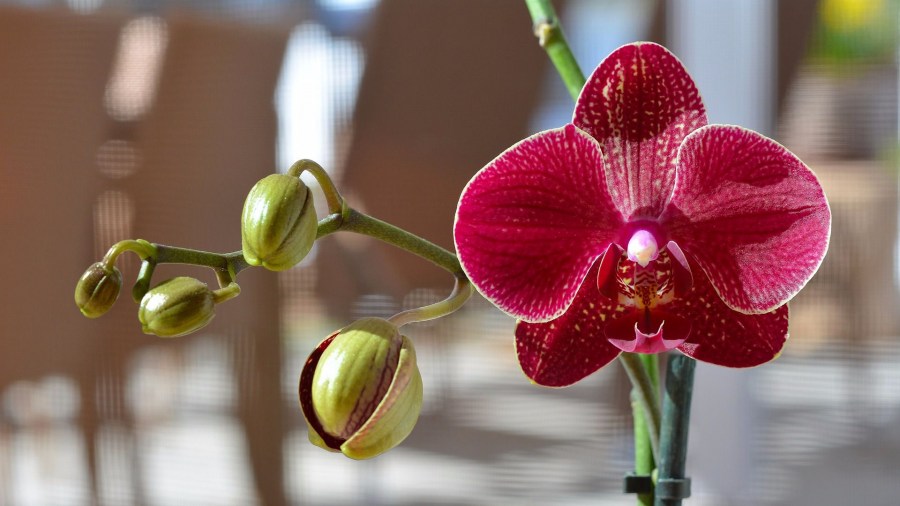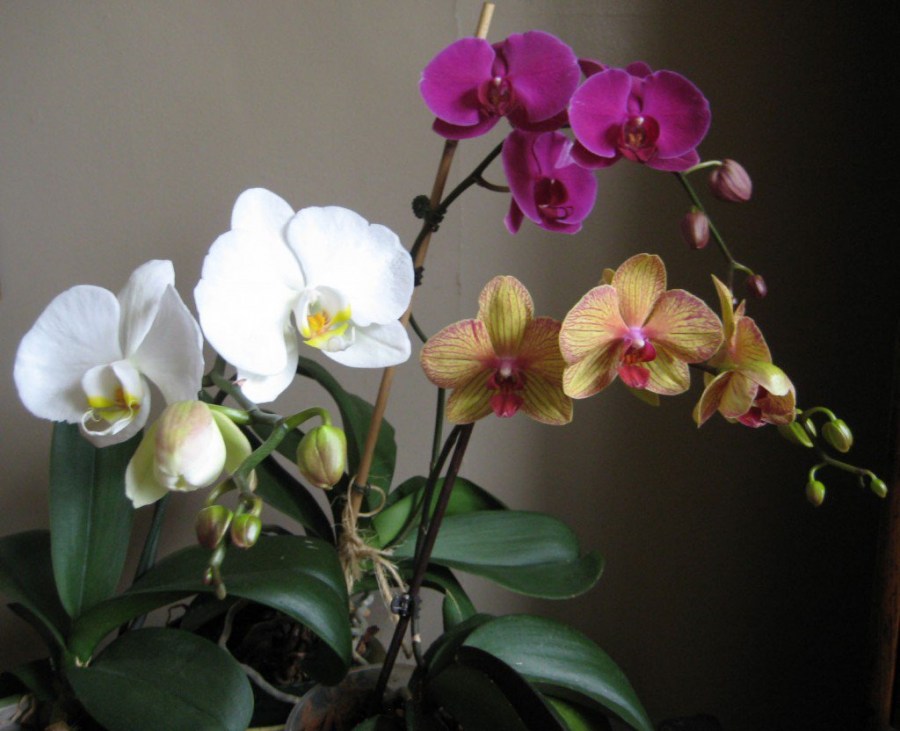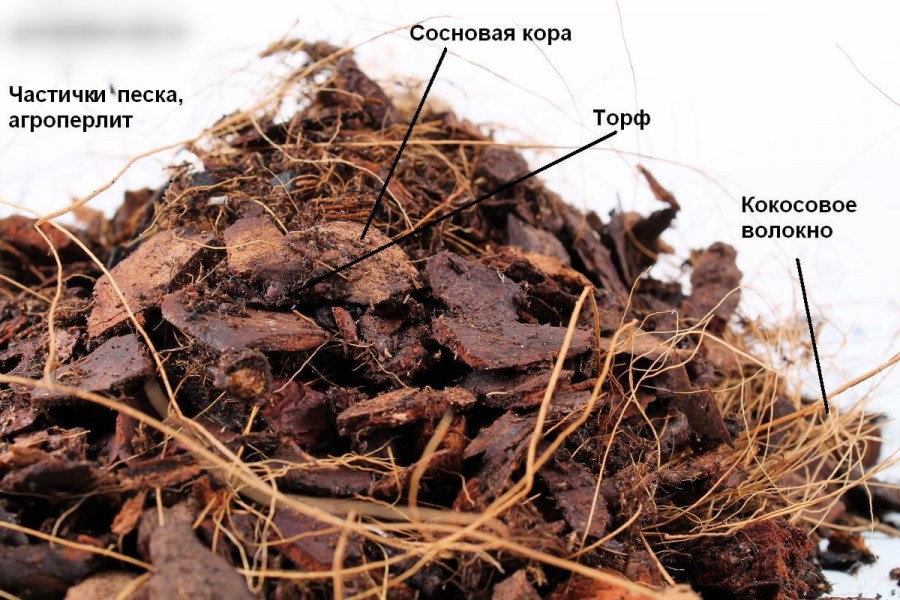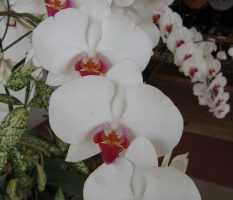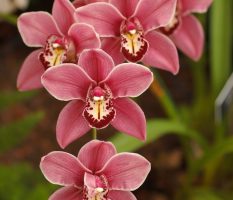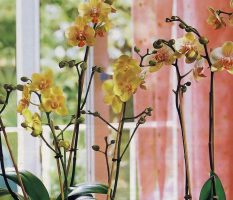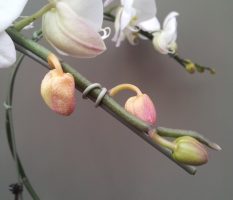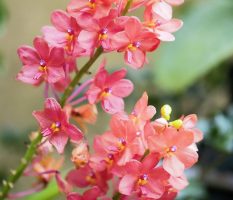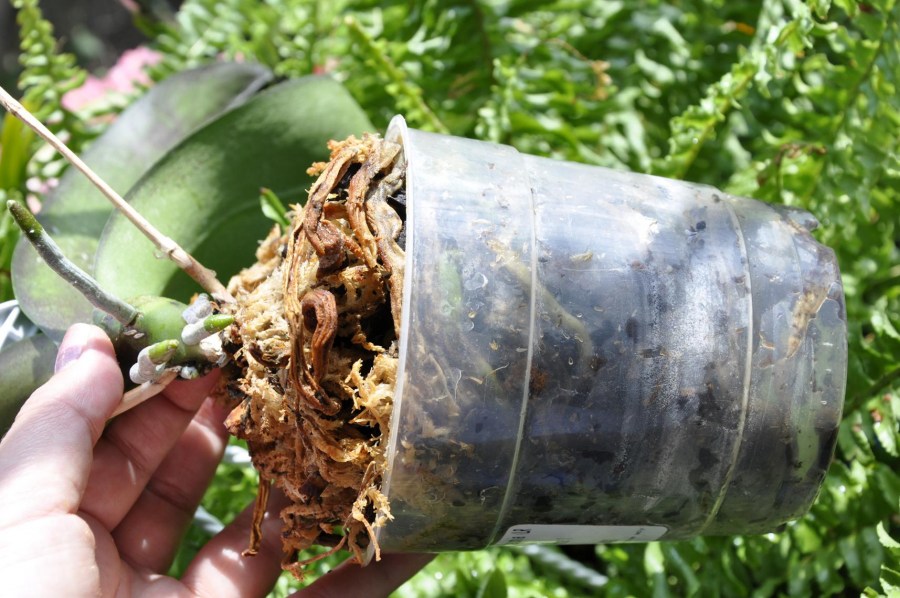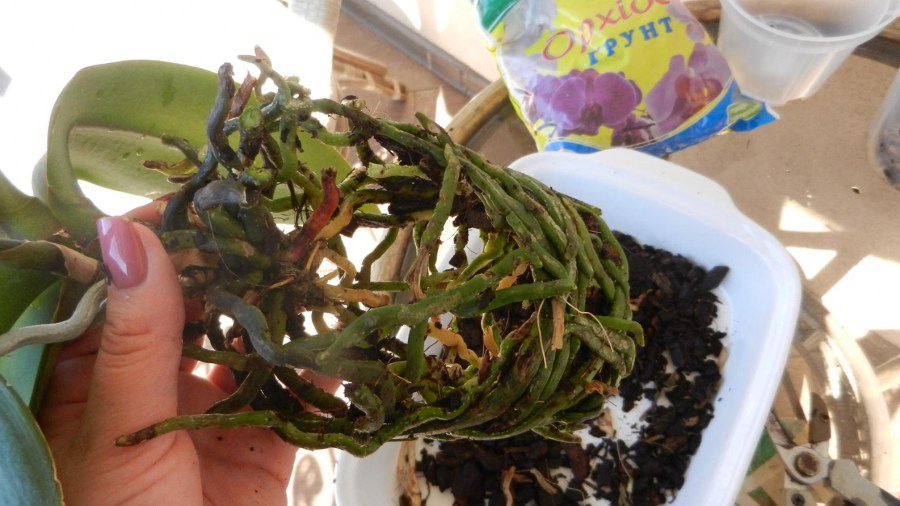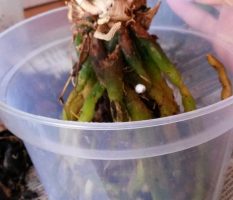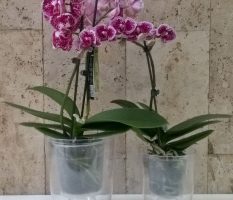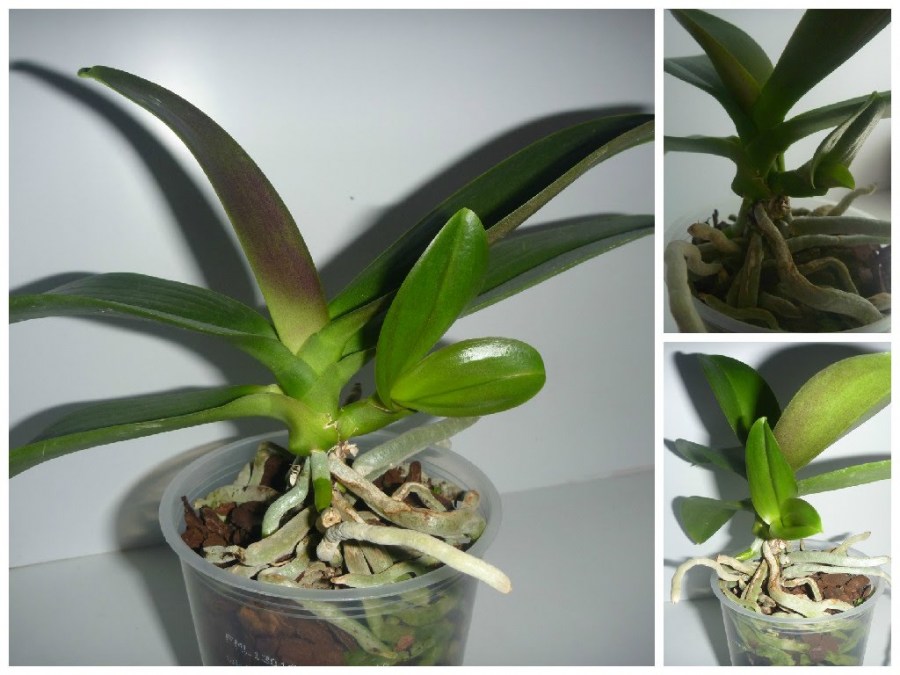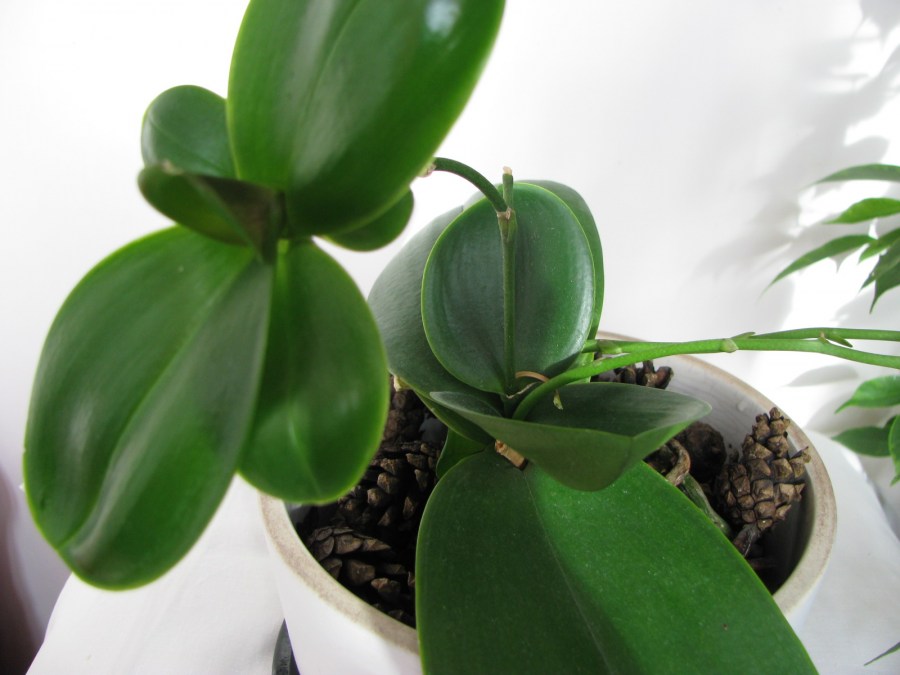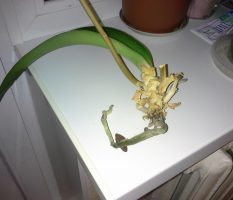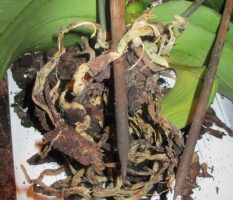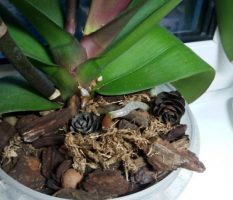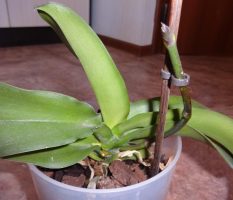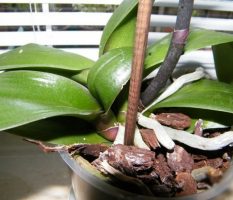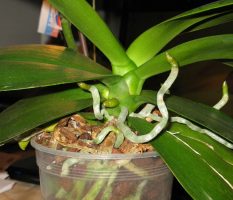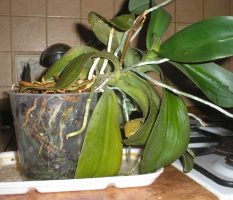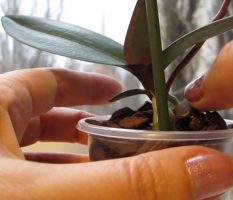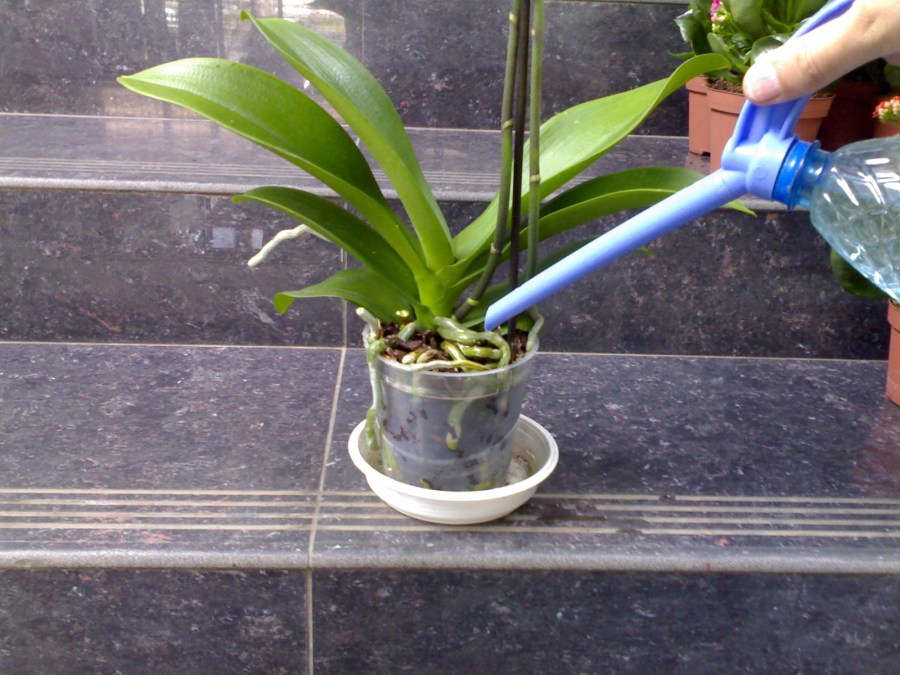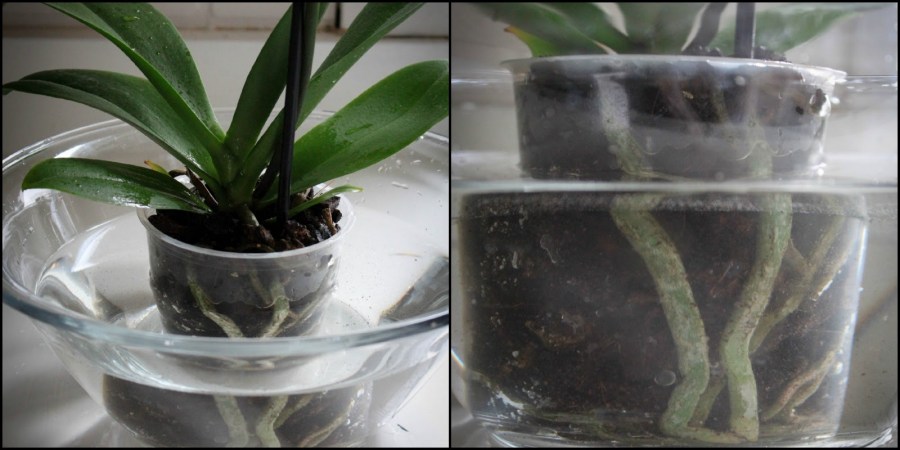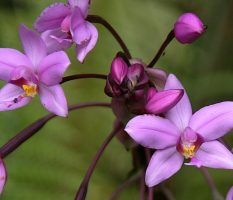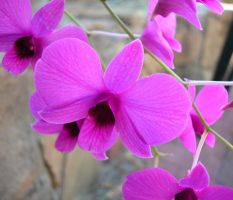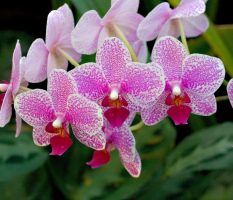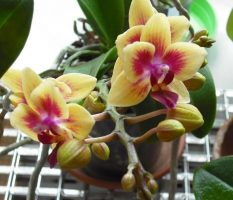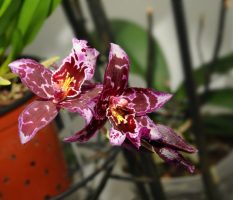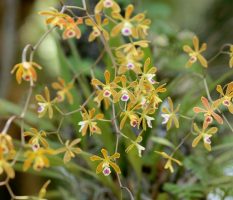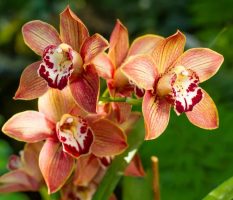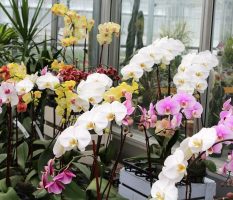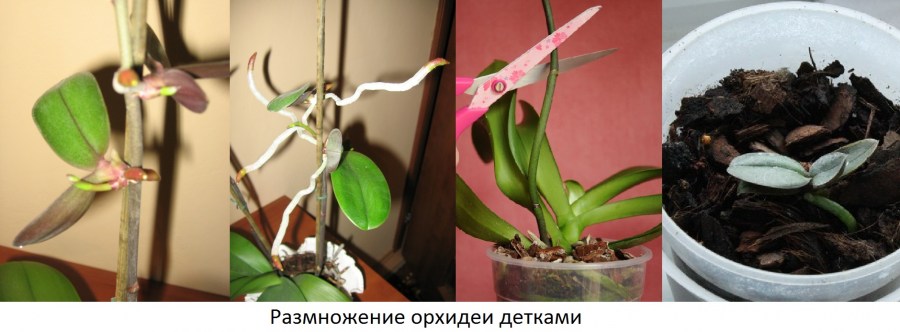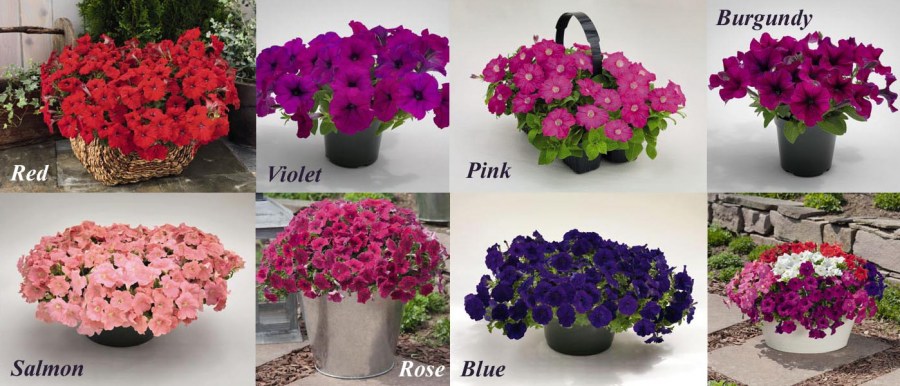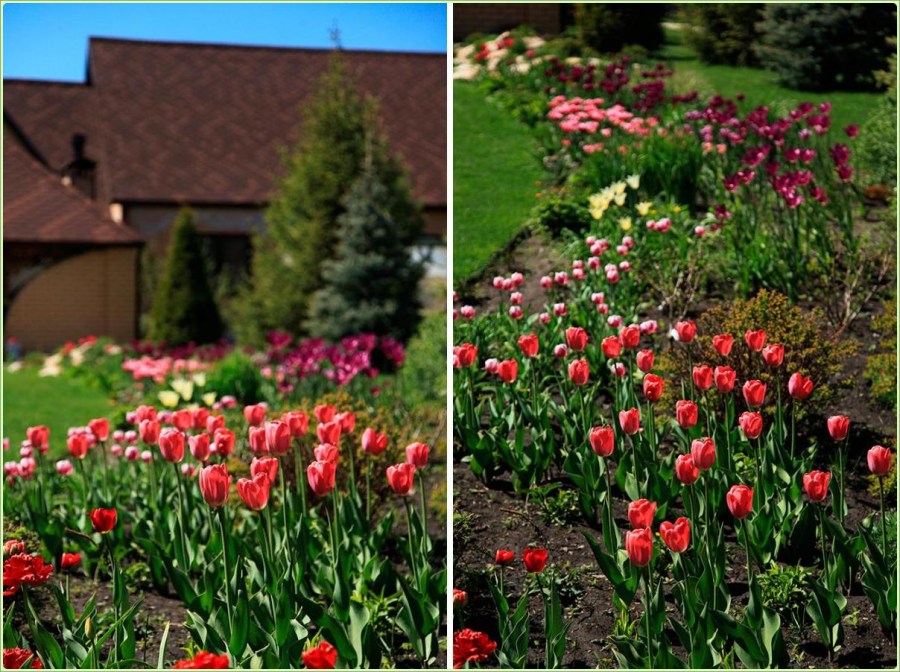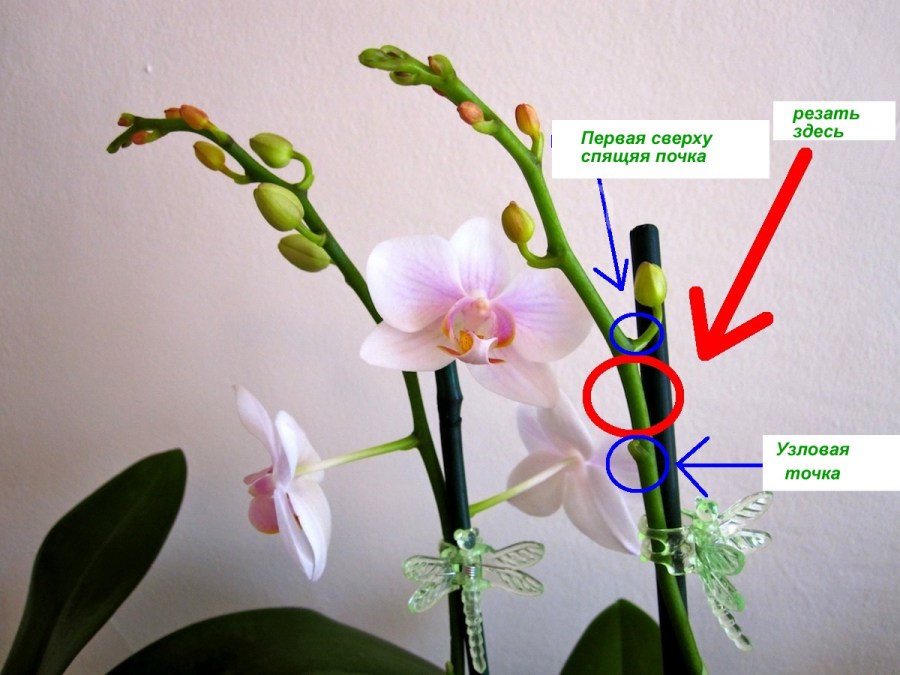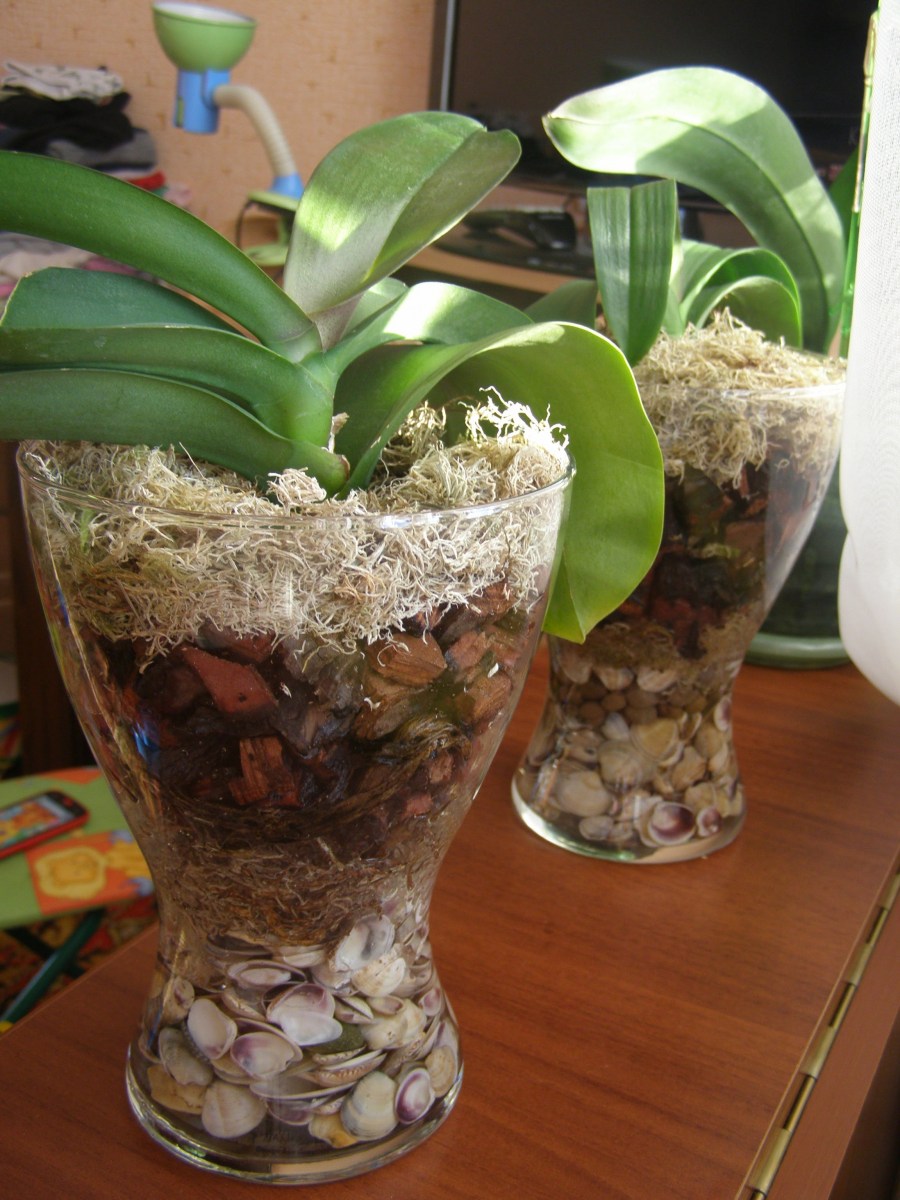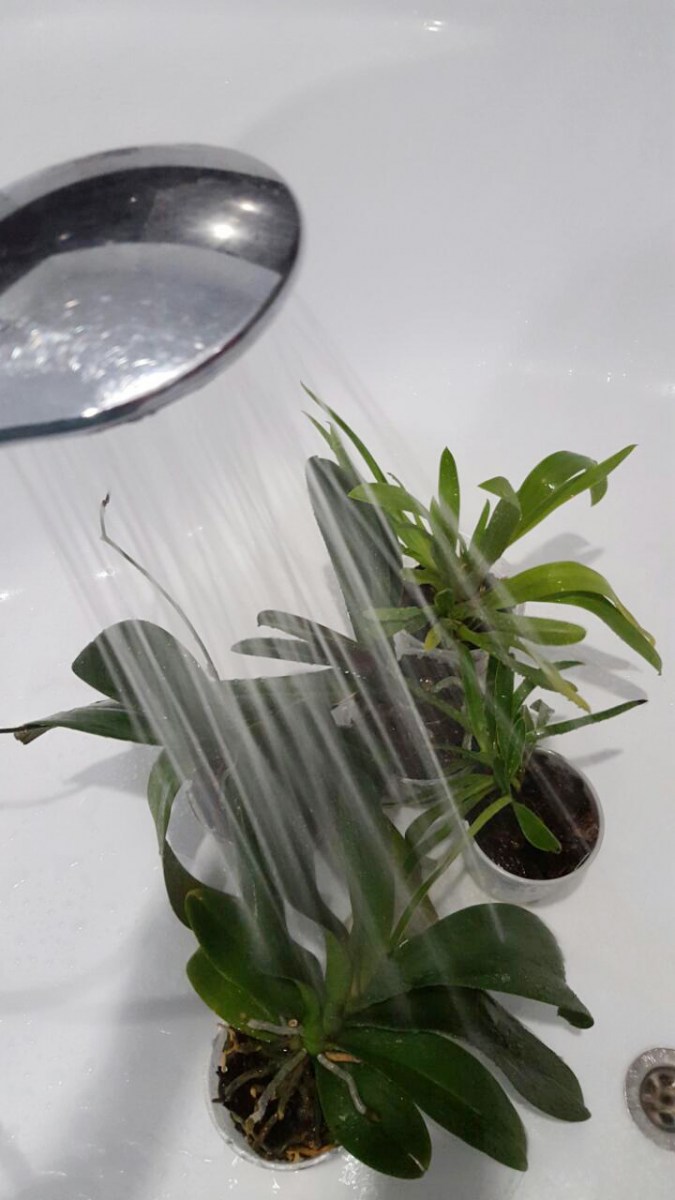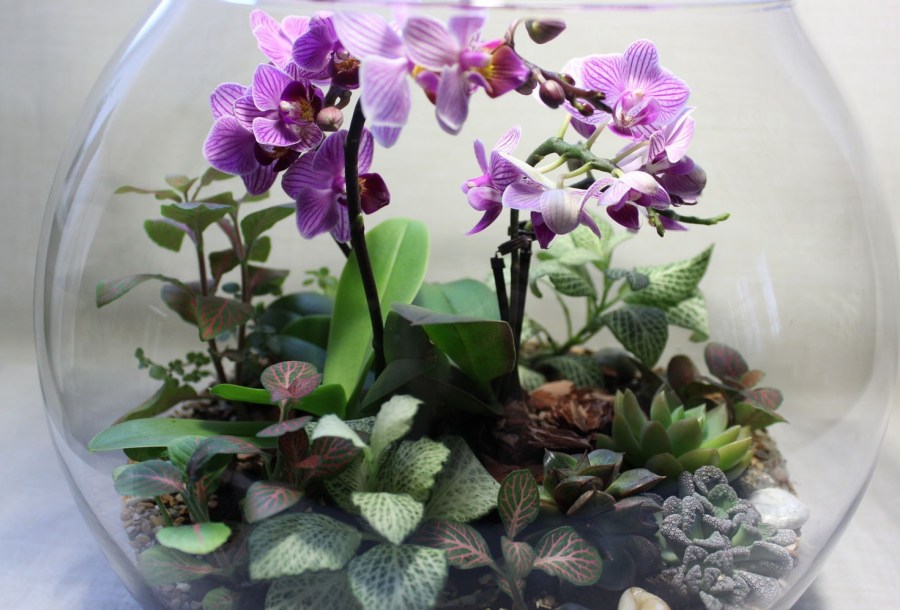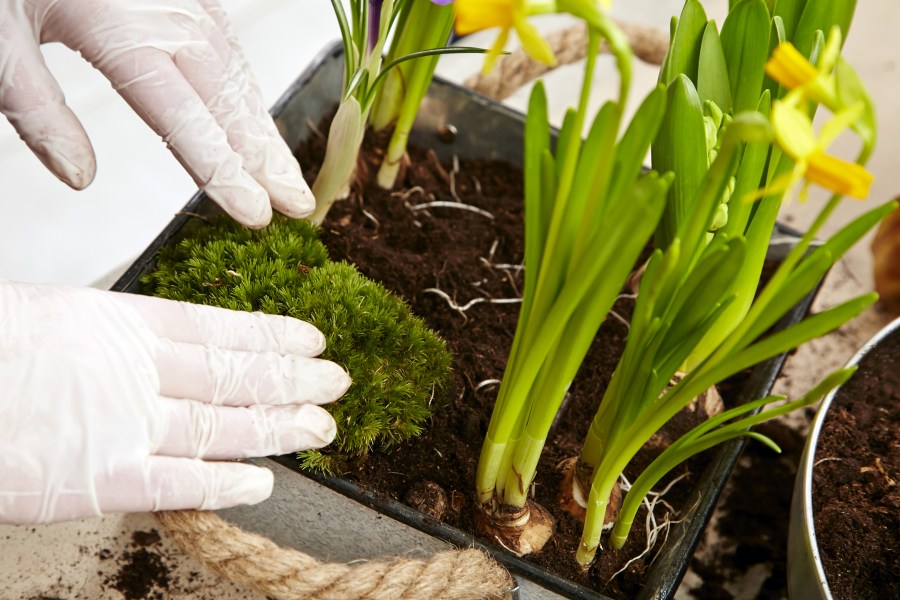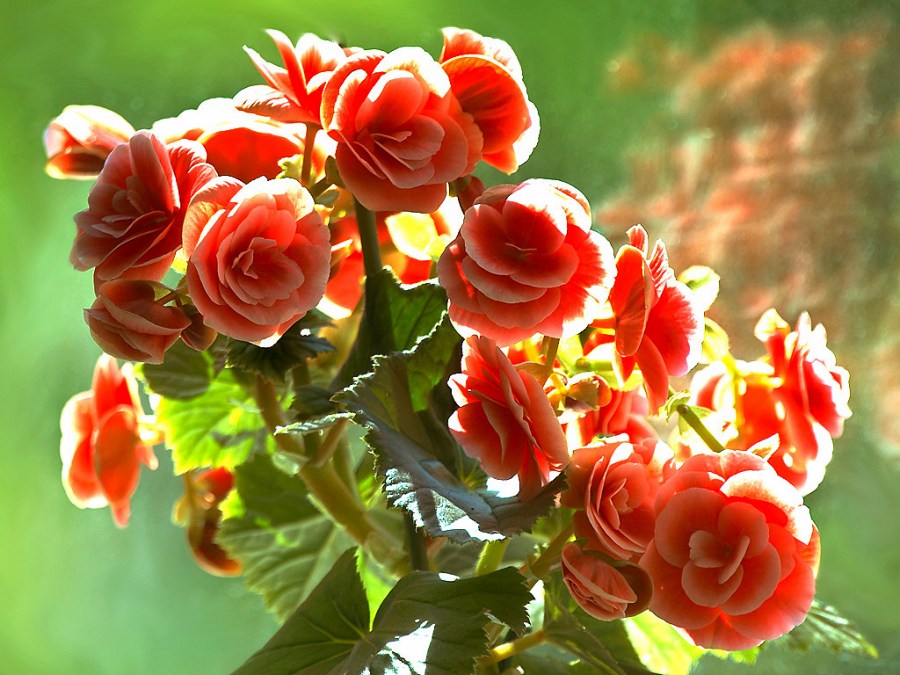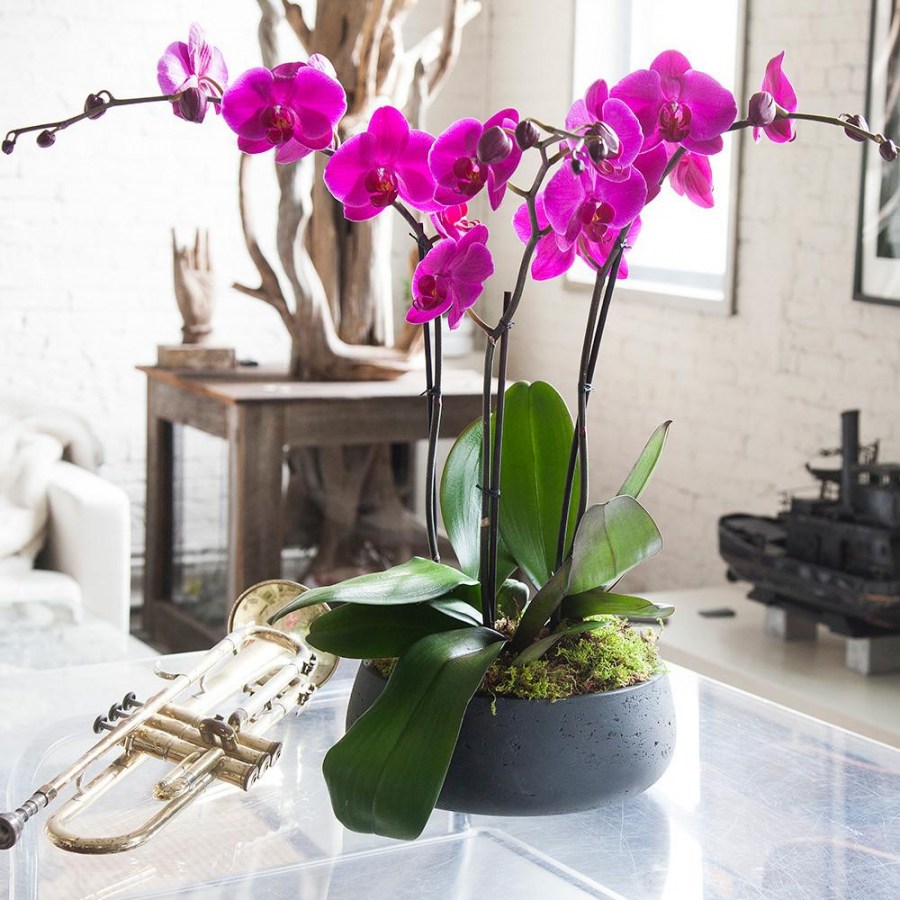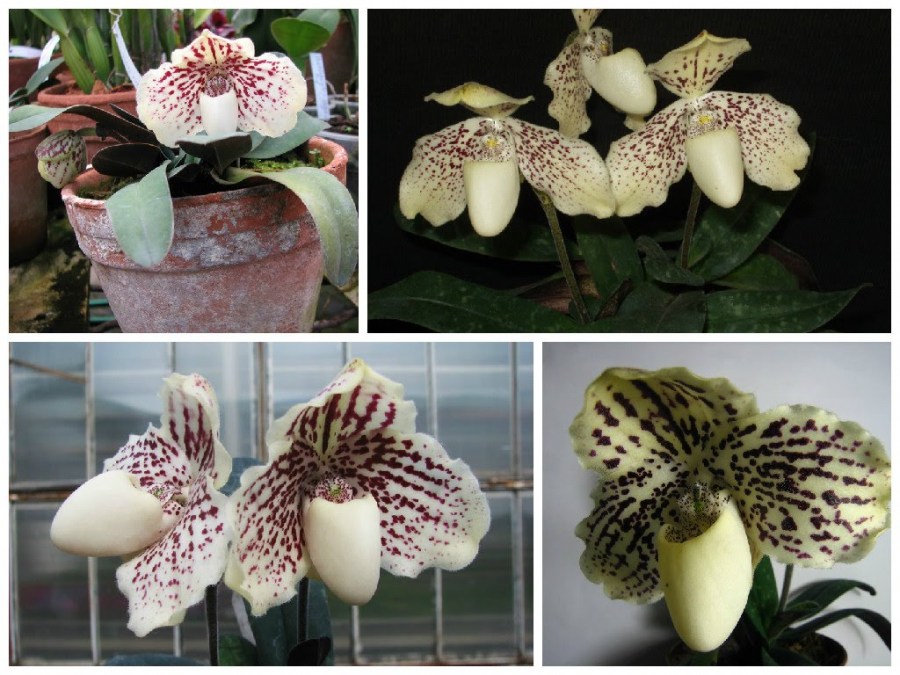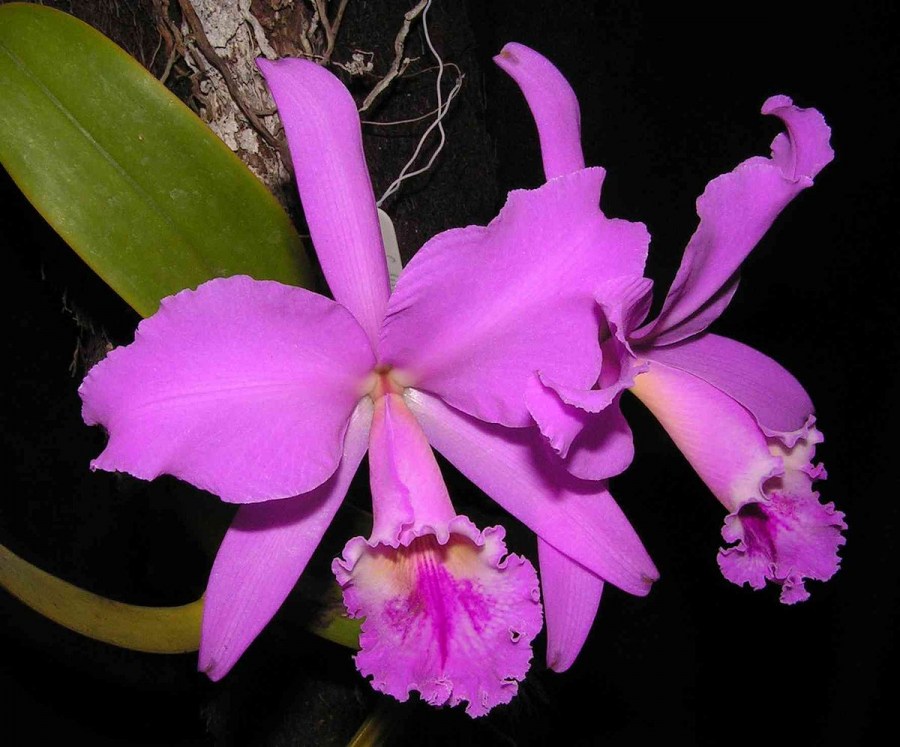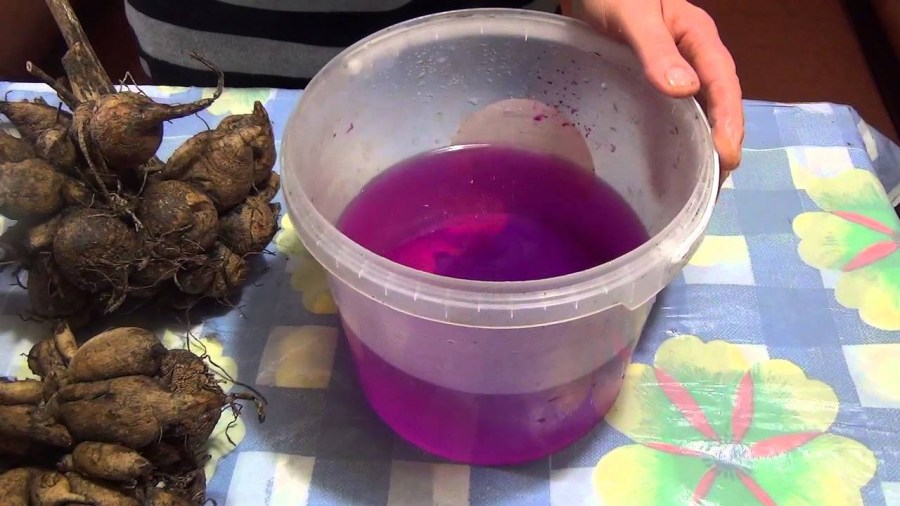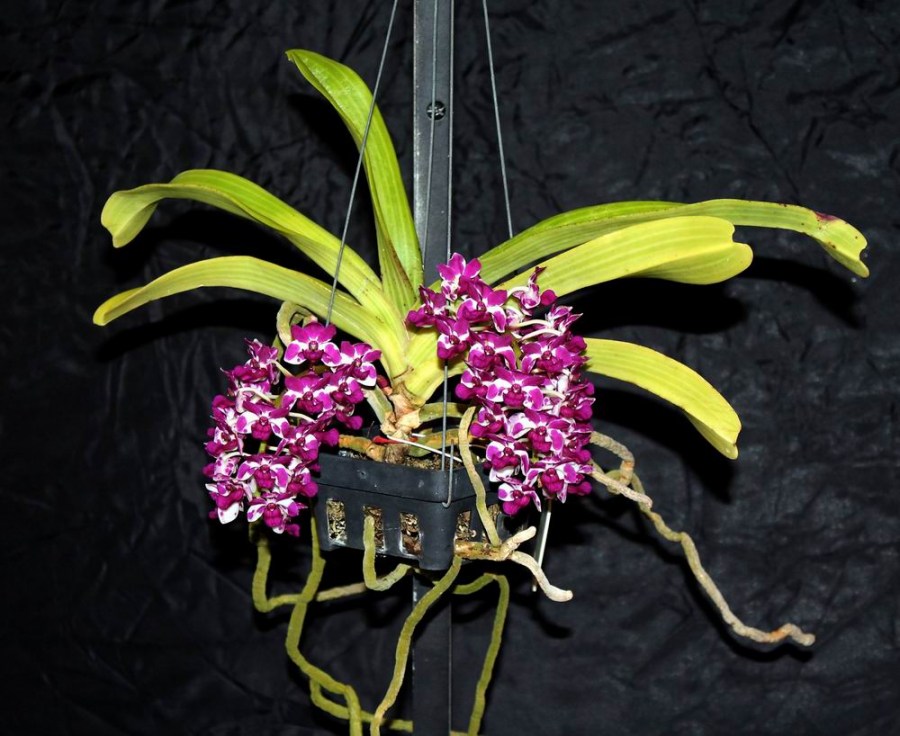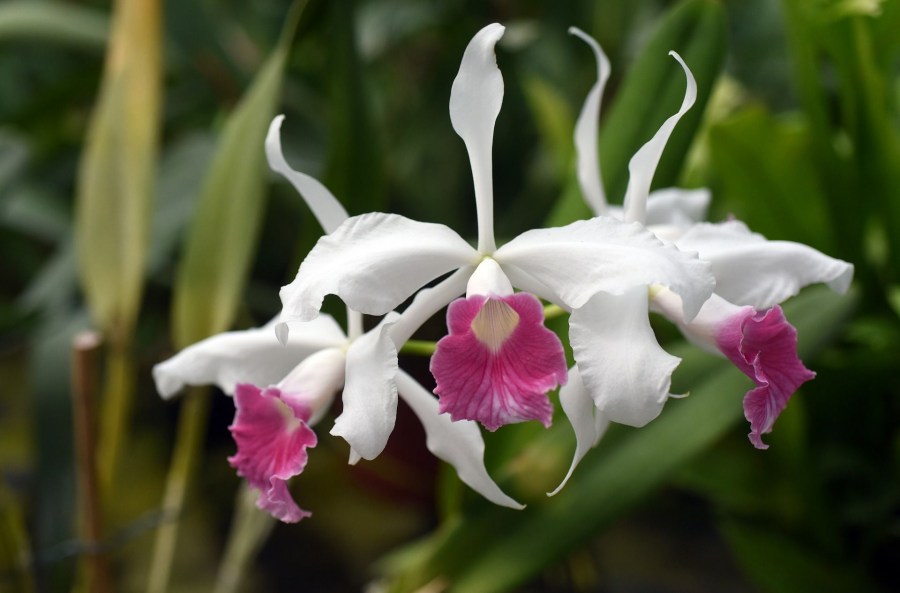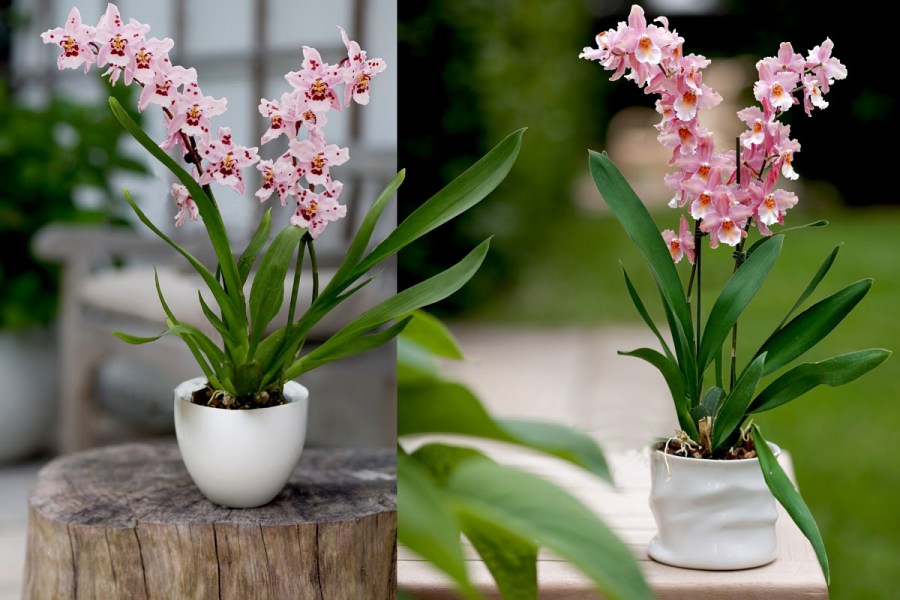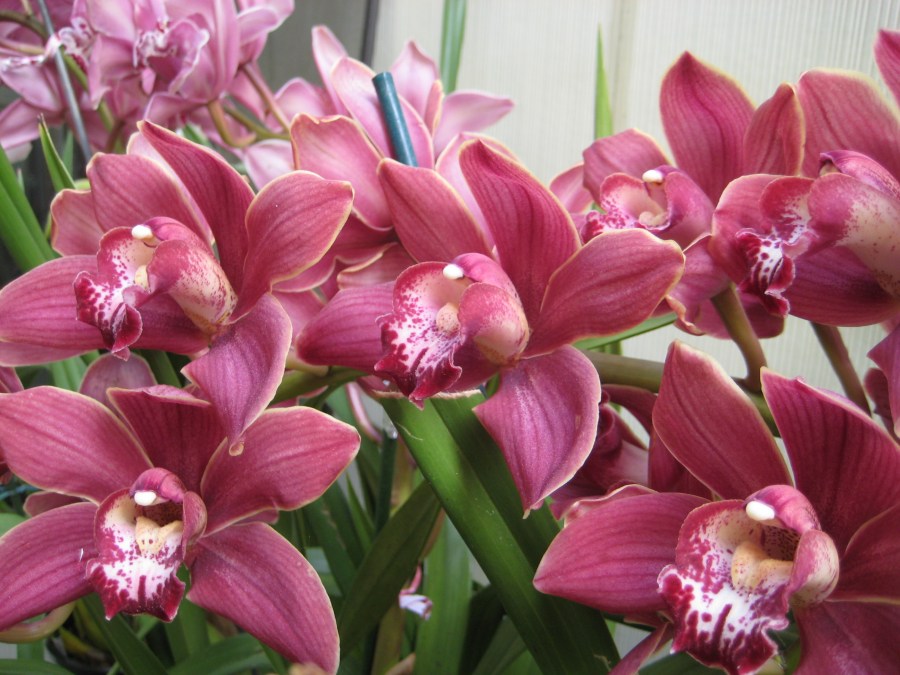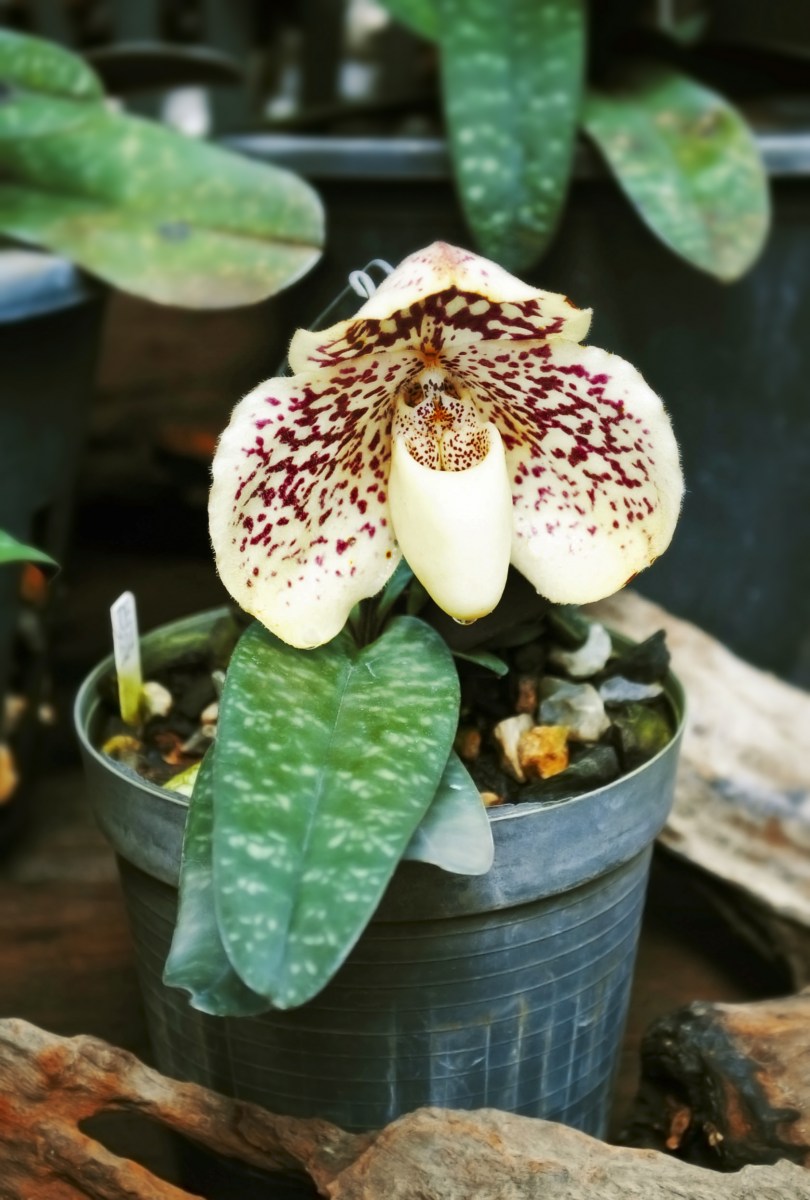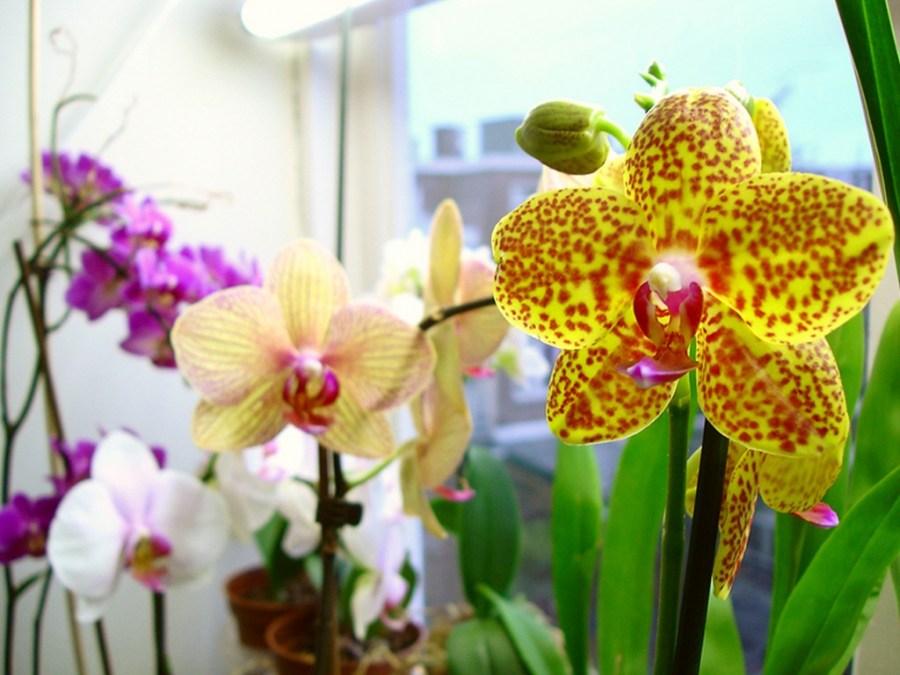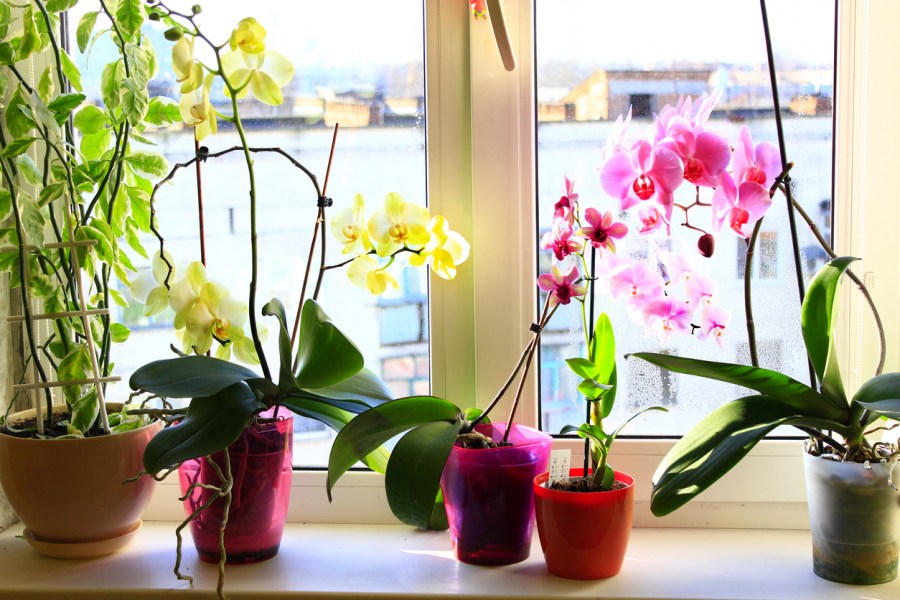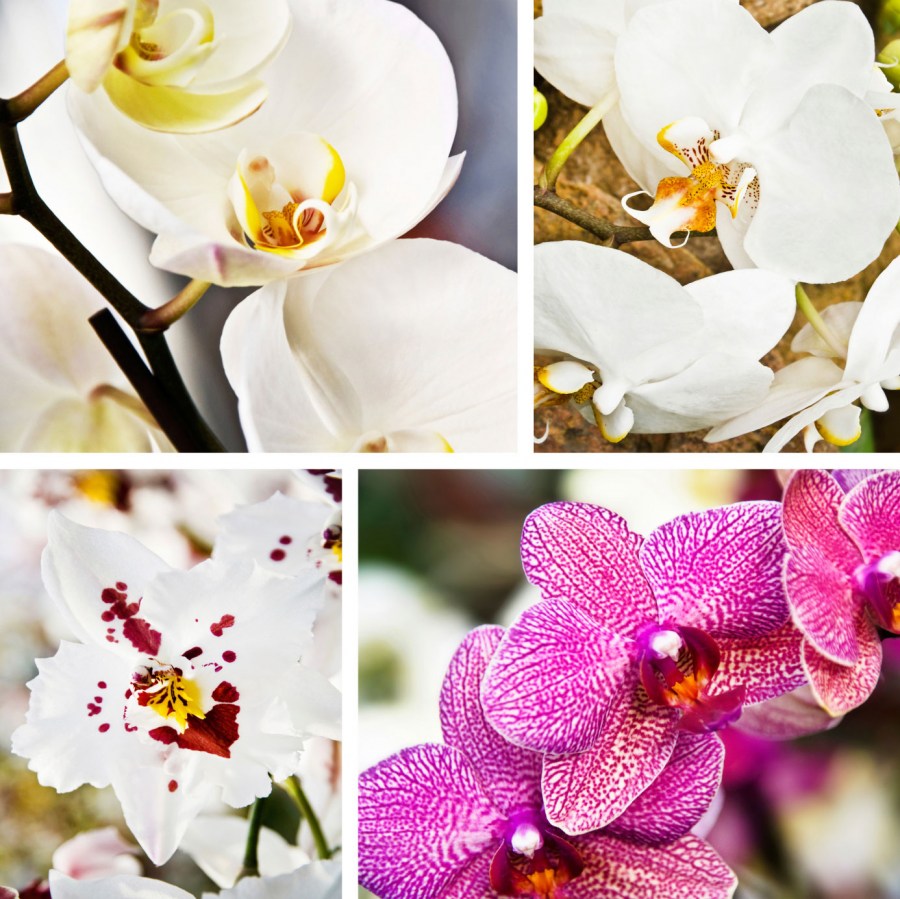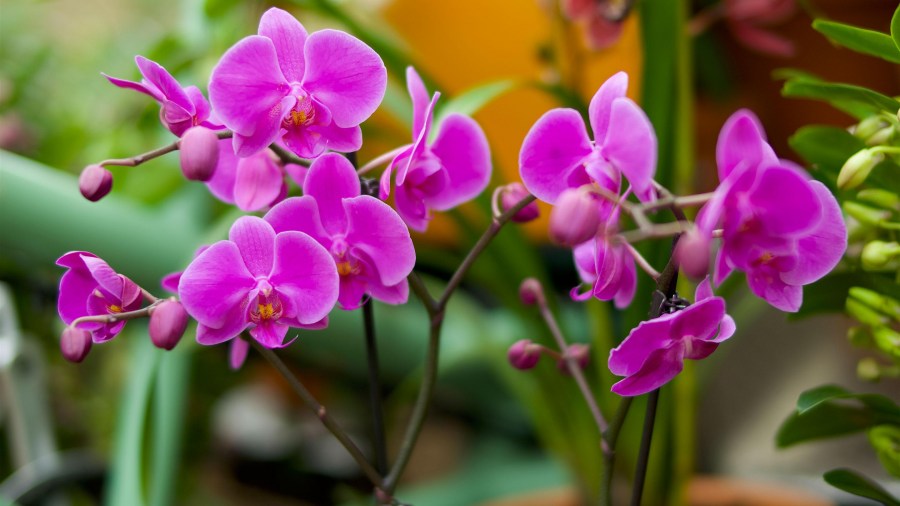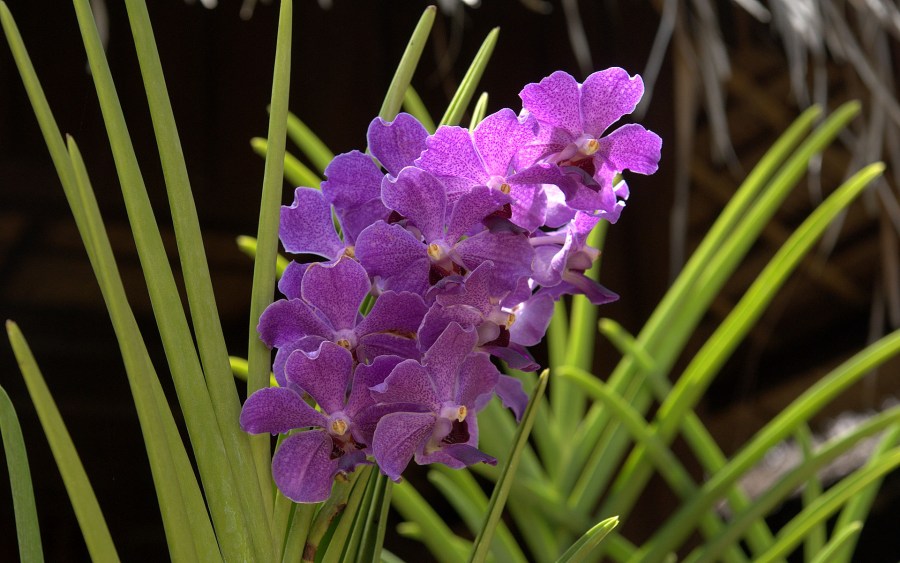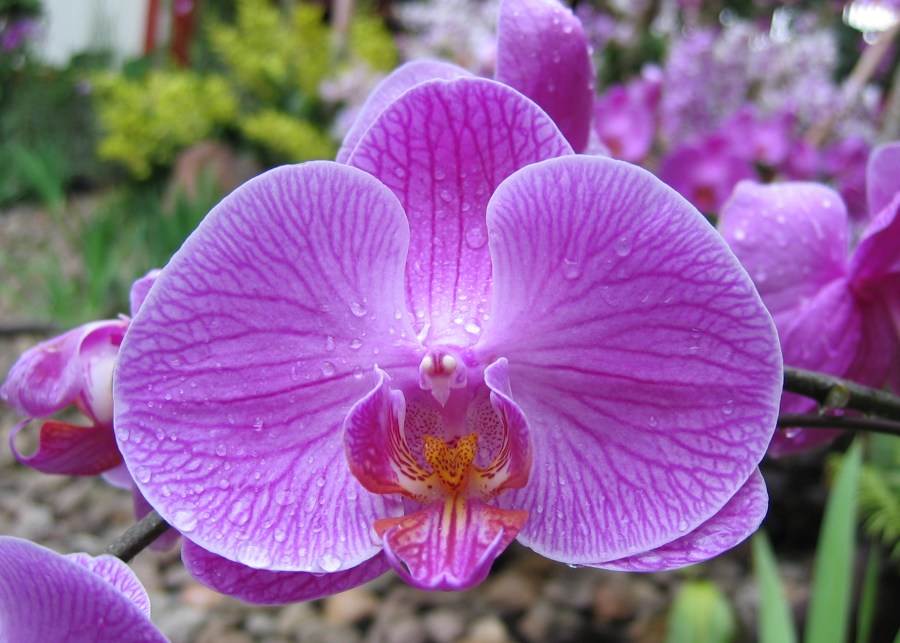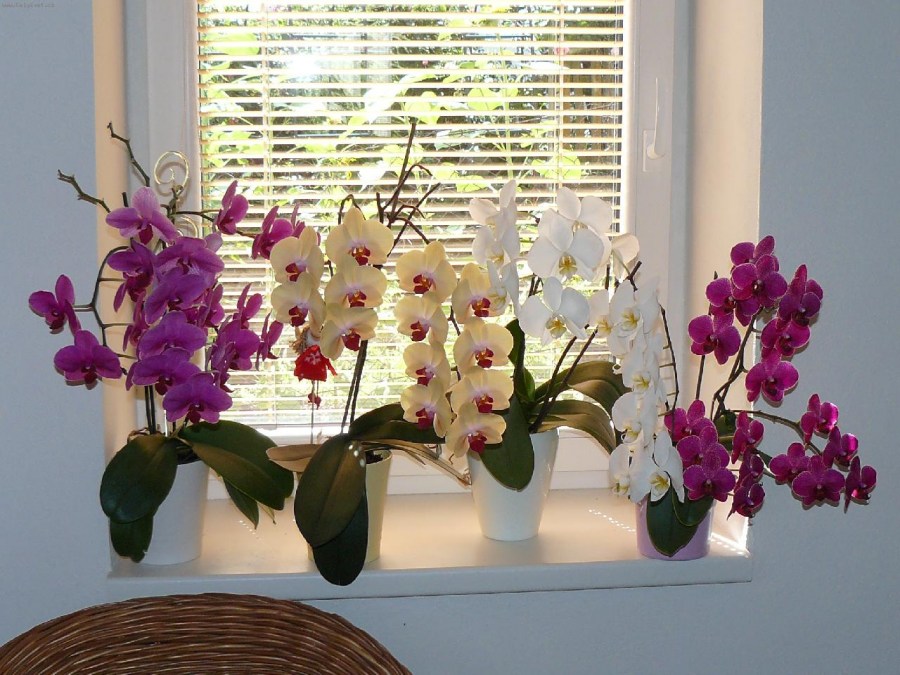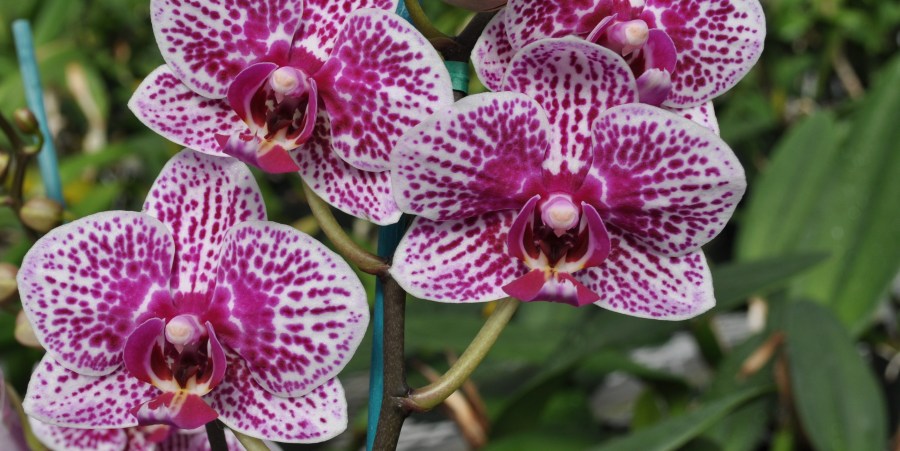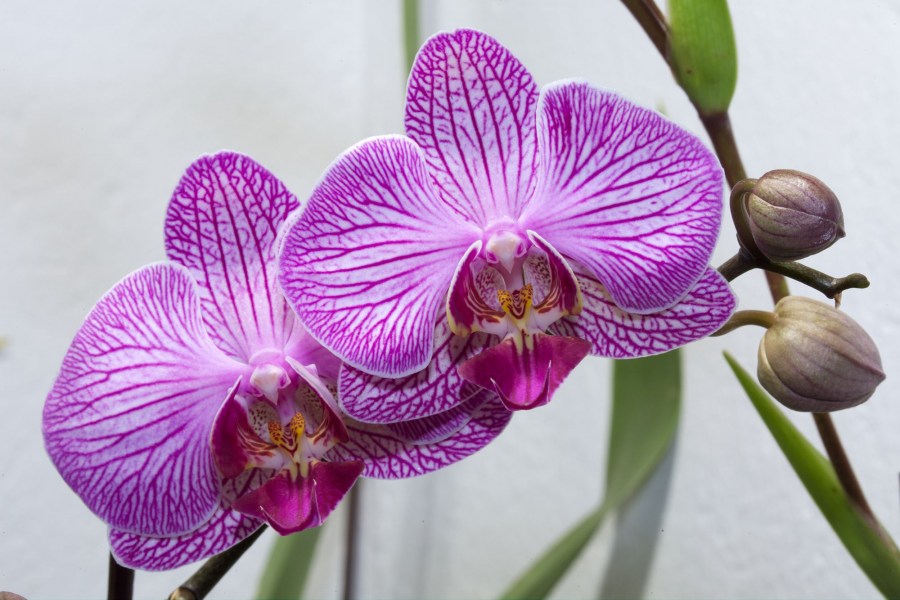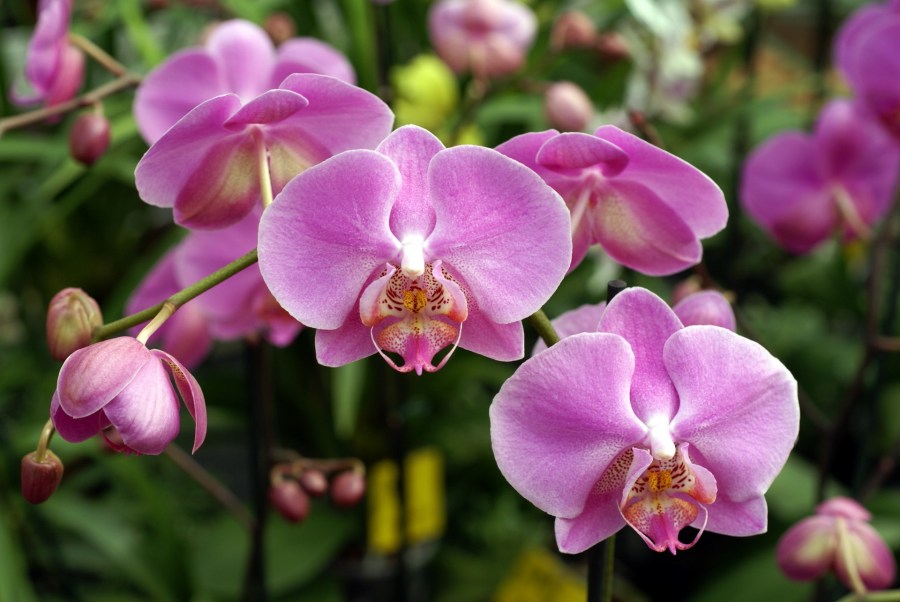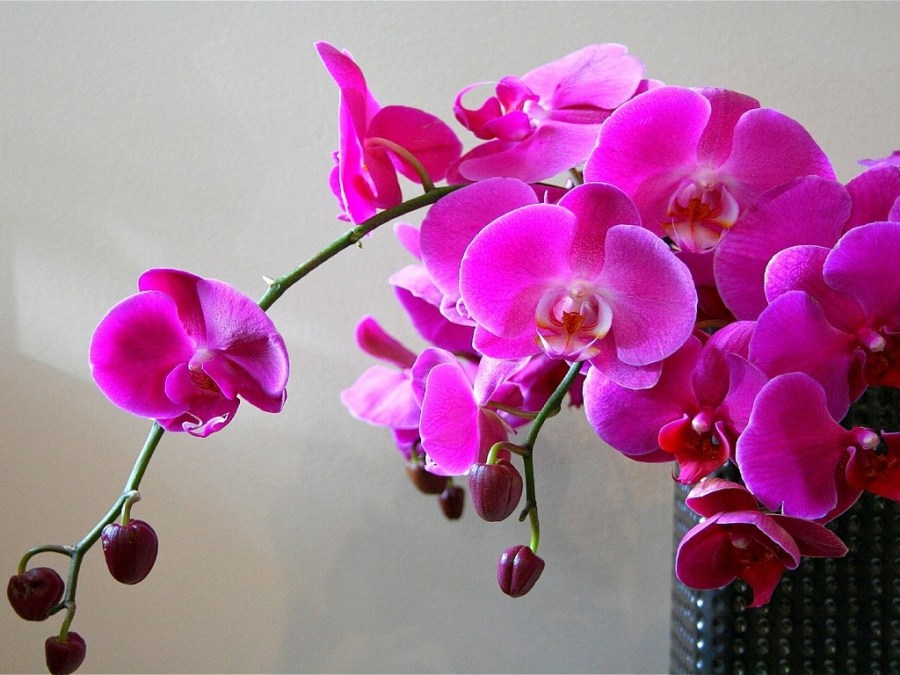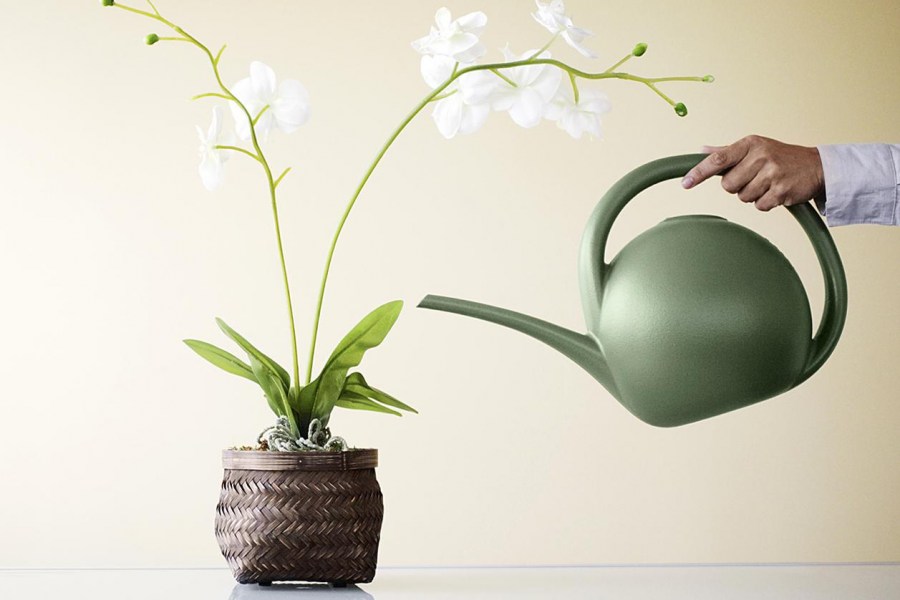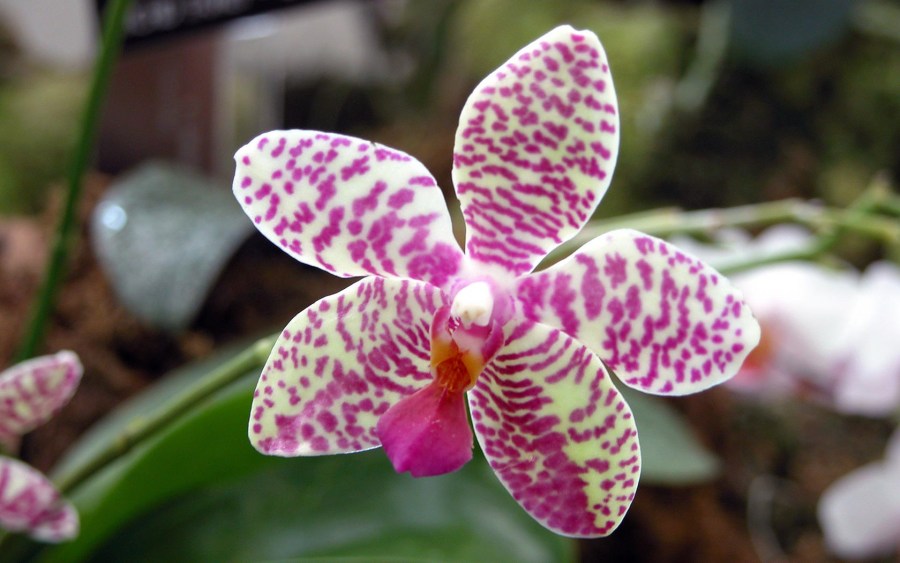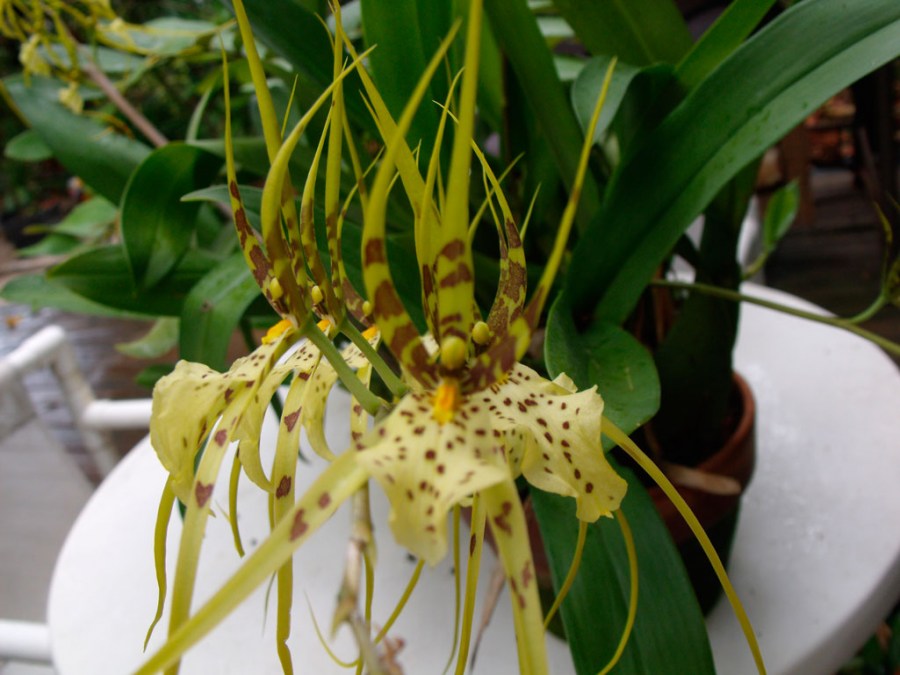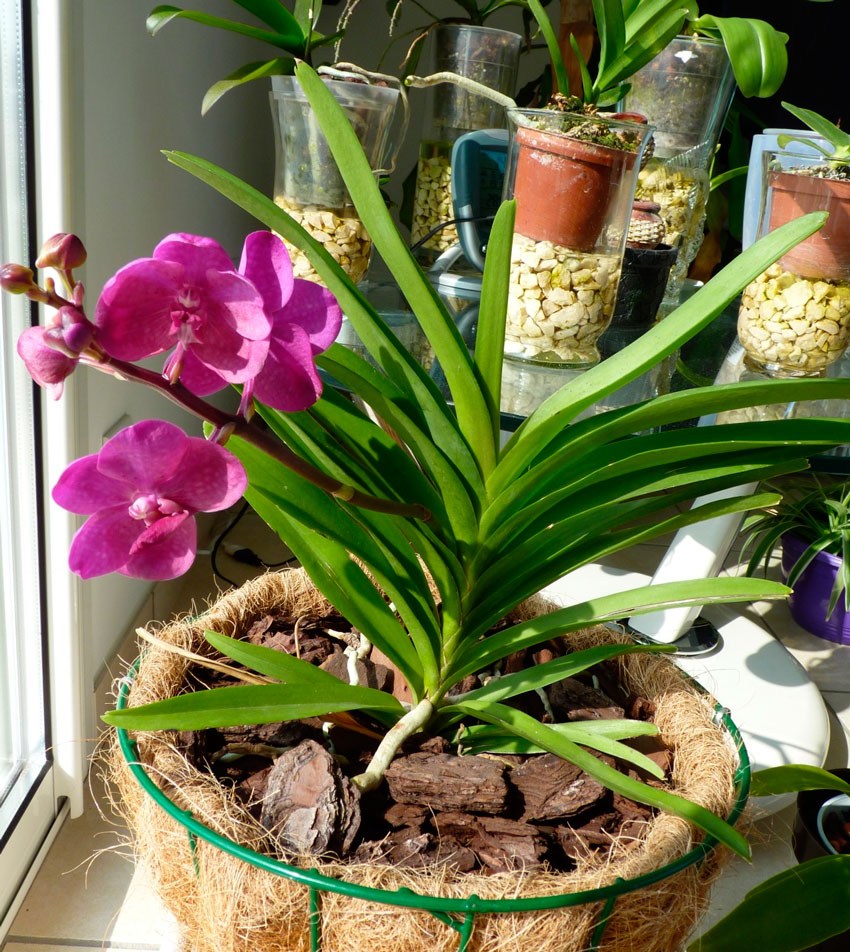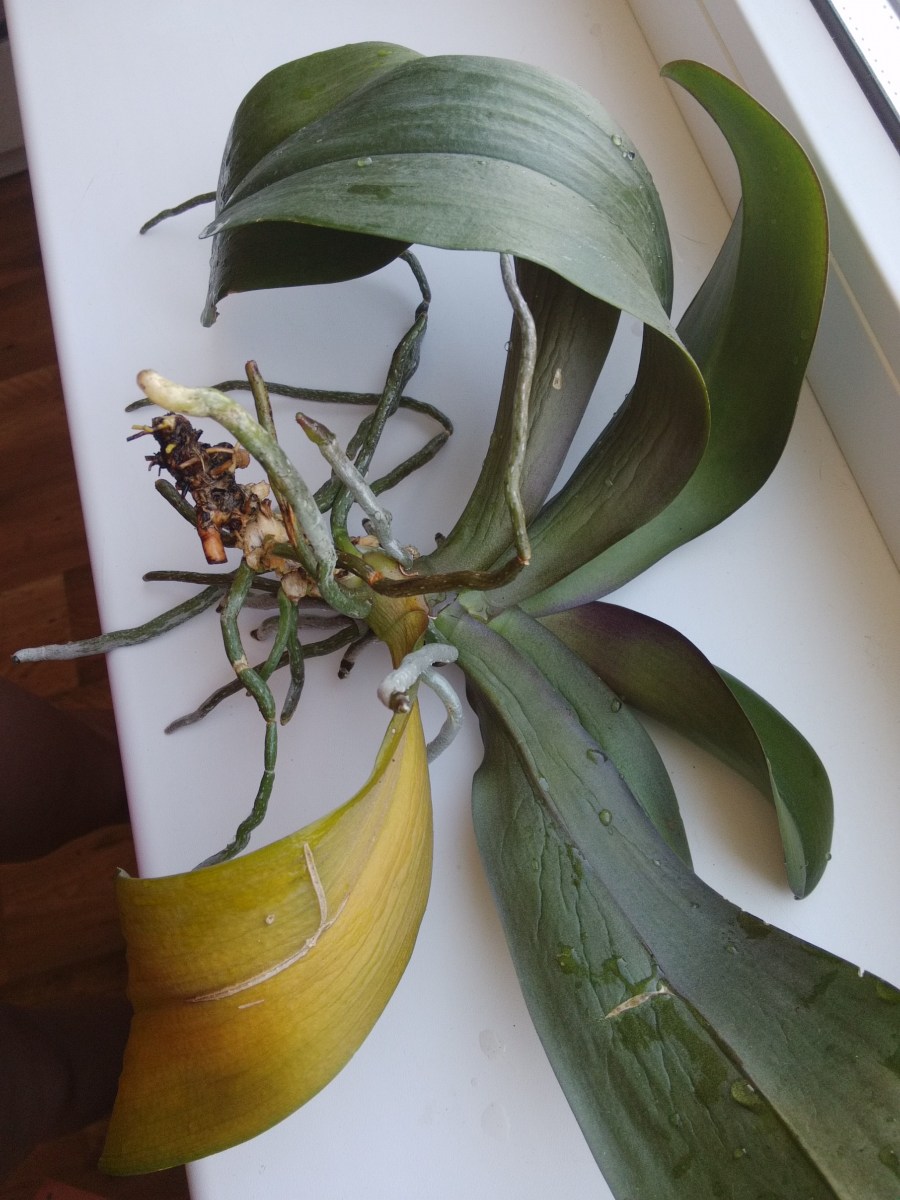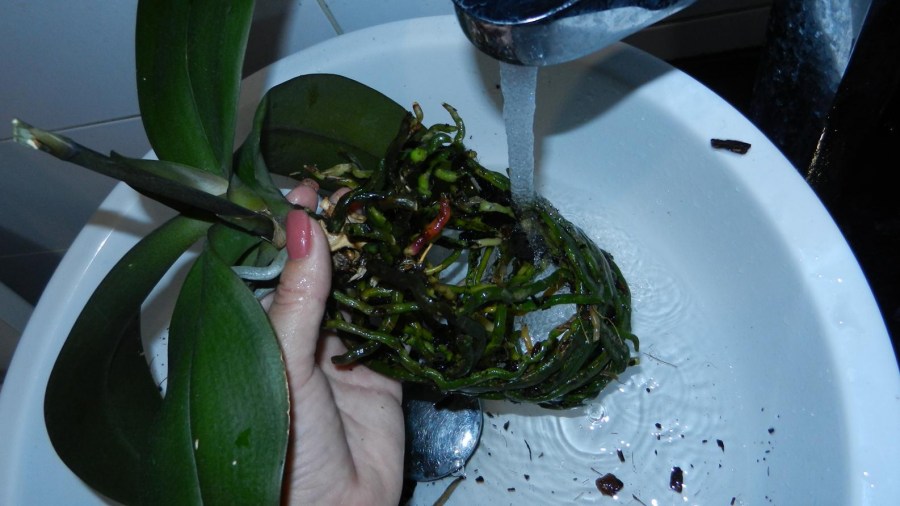Orchid flower - home care tips, useful tips + 90 photos
Orchid is one of the most amazing varieties of tropical flowers. A variety of varieties that differ not only in beauty, but also in the place of growth. For example, the most unique of them are able to grow even underground. The first flowers the orchid begins to form at the age of about 7 years. The length of this plant can reach sizes from 1 millimeter to 30 meters.
Landing
First you need to choose the right soil composition. You can create it yourself or just buy it in the garden market.
The composition of the substrate for orchids includes:
- pieces of bark (with a diameter of at least 5 mm.).
- charcoal.
- rhizomes of osmunda fern.
- moss sphagnum.
- pressed peat.
- Styrofoam.
Before planting, the orchid must be carefully removed from the container. If you can’t quickly, carefully pull it out, in no case do you have to pull it, since the orchid has very weak roots, they can break and then the plant will most likely die.
If the orchid is not pulled out of the pot, it is better to break or cut it. After you have removed the orchid from the container, you need to put it in a vessel with warm water, and let the old substrate leave, and then rinse the roots with a warm shower, if it does not leave completely, you can quietly help him with your hands.
Next, the plant, or rather its root system, is carefully and thoroughly checked with a knife or other pruning device, completely remove the damaged parts of the roots, those that are hollow, soft, slimy to the touch.
When the orchid is washed and checked, it is left on a pre-prepared dense layer of paper towels, and left to dry for several hours.
As pots for planting, it is recommended to use plastic pots, since the root system of orchids grows on the walls of ceramic unglazed pots, which is why during the transplantation the pot will have to be crushed, after covering it with a towel. The process is not quite simple, and the pot is a pity, so it is better to use plastic vessels with a sufficient amount of incoming air, for this it is permissible to make holes on the sides of the vessel.
Orchids grow best in transparent pots, since their roots can enter the process of photosynthesis, but color pots look better in the interior, they can also be used, there will not be much difference.
When the substrate necessary for planting is prepared, the container, the orchid itself, as well as drainage, you can proceed to planting the orchid. We pour a layer of drainage down the pot, after which we pour a layer of humus, five centimeters high.
Now we insert the orchid itself into the pot and gently sprinkle it on all sides with a substrate, completely covering the root system. Do not forget that the orchid is an epiphyte, a plant that grows around other plants, which means it needs to grow around something, it can be attached to a peg, at least for the first time.
After planting, the orchid can be abundantly watered for two weeks. If the level of the substrate becomes lower than the root system of the orchid, then it must be added.
Orchid transplant
Do not rush to transplant orchids, their root system is easily damaged, you need to transplant the orchid, after the substrate becomes unusable, it will not let water and air through.
The best moment for transplanting, a little later after the flowering of the orchid, as soon as it begins to appear new leaves, shoots, roots. During this period, the plant easily adapts to a new substrate, the root system quickly takes root.
Orchid dressing
The process for this plant is not frequent, but necessary during its growth. It is best to purchase a special fertilizer for orchids, considered only for them, but universal fertilizers can also be used in cases with highly divorced species. During active growth, the orchid is fed once every two or three weeks.
Top dressing with universal fertilizer is carried out in the least specified measure. At the stage of its growth, it is possible to increase the amount of incoming nitrogen, during the formation of flower buds, increase the amount of phosphorus and potassium.
Orchid propagation
It is quite problematic to bring an orchid out of the house from the seeds. Because of what, most amateur gardeners use the vegetative method of propagation of these plants. Species with sympodial branching are usually propagated by dividing the bush or they are separated from them by old, pseudobulbs, without leaves. Then they are placed in another pot, which is placed in a warm place, covering it with a glass jar or plastic bag.
After a certain period of time, small shoots will appear at the base of the bulb. They can be separated and grown as separate orchids.
For orchids with a monipedial branching type, a cuttings method of their propagation is used.
Cutting orchids
A stem or part of the stem is taken, necessarily with the presence of aerial roots, about ten or fifteen centimeters long. It is horizontally laid in a room greenhouse, on a moistened sphagnum.
As soon as new orchids begin to form from the cuttings, in some types of orchids this is the offspring, if it is clear that the shoot has good roots, then it is separated along with part of the stem and transplanted into a separate pot. Orchids only planted in the substrate must be fixed with pegs.
Conclusion
In conclusion, we can say that many refuse to grow orchids, because of the seeming difficulties in their care. You read about how to plant, transplant, feed orchids. In addition, on the Internet you can find many different photos related to the cultivation of orchids, which will greatly facilitate your understanding of this process.
Now you can start planting orchids yourself. Never be afraid to start, because at the beginning of any business lies a difficult decision, and at its end you will usually have a good result.
Do not be afraid to plant orchids, they are quite unpretentious, but require careful treatment of them, as well as many species require constant support around which they will grow.
Orchids are beautiful flowers, but proper care is also necessary. Therefore, take care of them with dignity, try not to damage their roots and transplant them in time, and they will delight you with new buds of luxurious, colorful flowers.
Photo orchid flowers
Chalet style house - real photos of the best country house projects
Join the discussion:
